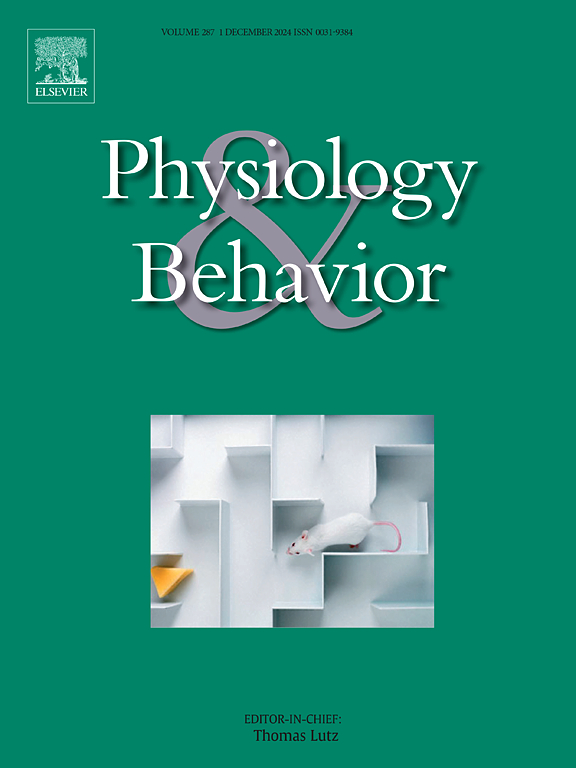共同居住和社会隔离对肠道微生物群的影响。
IF 2.4
3区 医学
Q2 BEHAVIORAL SCIENCES
引用次数: 0
摘要
有充分的证据表明,社会联系模式和肠道微生物群都通过神经内分泌、免疫和代谢系统等多个系统影响个体的身心健康。社会关系塑造了肠道菌群,而肠道菌群的改变反过来又在一个反馈循环中调节了宿主的社会行为。因此,我们假设肠道微生物群介导了社会联系模式和个人幸福感之间的相互作用。在这项初步研究中,采用小鼠模型研究了共同居住(CH)和社会隔离(SI)对肠道微生物群群落结构的影响。24只3周龄小鼠随机分为CH组和SI组(6只/性/组),连续8周。CH小鼠被集体饲养在每笼3只小鼠的笼子中,而SI小鼠被单独饲养在不透明屏障的笼子中,以防止相互作用。我们发现,CH增加了肠道微生物群多样性并稳定了其组成,而SI降低了肠道微生物群多样性并导致更多的组成波动——这些变化之前与免疫、代谢和神经发育有关。同时,这项工作还表明,包括凋落物控制可能是建立肠道微生物群研究稳定基线的关键。本文章由计算机程序翻译,如有差异,请以英文原文为准。
Effects of co-housing and social isolation on the gut microbiota
It is well documented that both social connection patterns and gut microbiota influence individuals’ mental and physical health through multiple systems, such as the neuroendocrine, immune, and metabolic systems. Social connections shape the gut microbiota, and altered gut microbiota in turn modulates the host’s social behavior in a feedback loop. We therefore hypothesize that the gut microbiota mediates the interaction between social connection patterns and individual well-being. In this pilot study, the effects of co-housing (CH) and social isolation (SI) on shaping gut microbiota community structure were investigated using a mouse model. Twenty-four 3-week-old mice were randomly divided into CH and SI groups (6/sex/group) for 8 weeks. CH mice were socially housed in cages containing 3 mice per cage, while SI mice were individually housed in cages with opaque barriers to prevent interaction. We found that CH increased gut microbiota diversity and stabilized its composition, whereas SI decreased gut microbiota diversity and resulted in more compositional fluctuations—changes previously associated with immunity, metabolism, and neurodevelopment. Meanwhile, this work also demonstrates that including litter controls may be pivotal in establishing a stable baseline for gut microbiota research.
求助全文
通过发布文献求助,成功后即可免费获取论文全文。
去求助
来源期刊

Physiology & Behavior
医学-行为科学
CiteScore
5.70
自引率
3.40%
发文量
274
审稿时长
47 days
期刊介绍:
Physiology & Behavior is aimed at the causal physiological mechanisms of behavior and its modulation by environmental factors. The journal invites original reports in the broad area of behavioral and cognitive neuroscience, in which at least one variable is physiological and the primary emphasis and theoretical context are behavioral. The range of subjects includes behavioral neuroendocrinology, psychoneuroimmunology, learning and memory, ingestion, social behavior, and studies related to the mechanisms of psychopathology. Contemporary reviews and theoretical articles are welcomed and the Editors invite such proposals from interested authors.
 求助内容:
求助内容: 应助结果提醒方式:
应助结果提醒方式:


